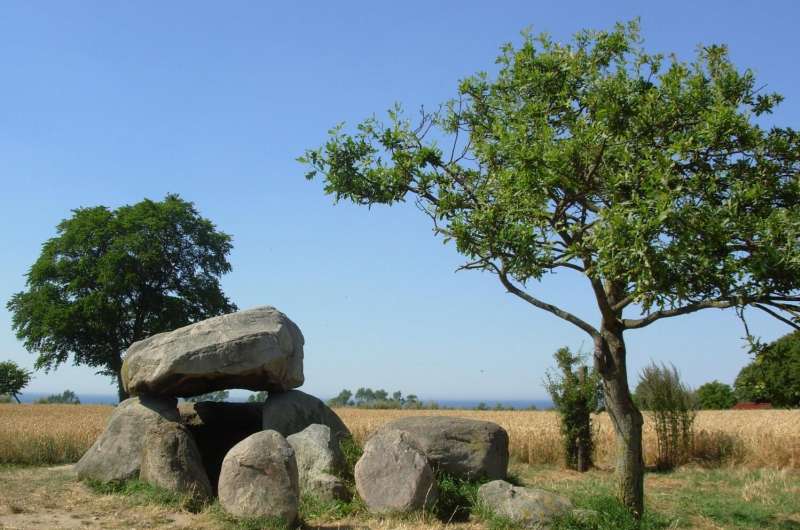Credit: CC0 Public Domain
(Phys.org)—A pair of researchers with Hartwick College in the U.S. has found evidence of young male humans eating dog meat as part of initiation rituals during the Bronze Age. In their paper published in Journal of Anthropological Archaeology, David Anthony and Dorcas Brown describe attributes of ancient bones and the evidence they found suggesting dog and possibly wolf eating as a rite of passage into manhood.
Young boys eating dogs, and in some cases wolves, as part of initiation into adulthood is a common theme in ancient writings from the Greeks to the Celts—and in virtually all writings by Indo-Europeans that have been identified as descendants of a common ancestral group that once dwelt in what is now a part of modern Russia. But to date, no one has ever found physical evidence of such early rituals, which some suggest means that it never really happened—it was only written about later. Others, however, believe that the prevalence of such writings suggests that it must have occurred. In this new effort, Anthony and Brown propose that ancient bones unearthed near Krasnosamarskoe offer long-sought evidence.
The bones were excavated during the years 1999 to 2001 (and dated to 3,700-3,900 years ago) and included both human and animal bones. The animal bones were mostly from dogs—2,770 of them were found, though most were fragments. Bone pieces from 18 wolves were also found. After studying the dog bones, the pair became convinced that they represented ritualized eating. They found that the bones had been cut or chopped to make eating the meat easier—they had also been cut in a standardized way, which also suggests ritualization.
Additionally, the bones showed signs of having been cooked, a clear sign of meal preparation. But the researchers also note that throughout history, dogs have only been eaten by people during starvation periods. Close analysis of the dog bones from Russia showed that they were mostly eaten during late fall, winter and early spring, and other evidence at the dig site showed that the people who ate the dogs were not starving. The dogs had all been mature healthy adults, as well, with few signs of mistreatment. And finally, they note that most of the bones were from male dogs, which were generally the only gender involved in written accounts of dog-eating rituals.
More information: David W. Anthony et al. The dogs of war: A Bronze Age initiation ritual in the Russian steppes, Journal of Anthropological Archaeology (2017). DOI: 10.1016/j.jaa.2017.07.004
© 2017 Phys.org























